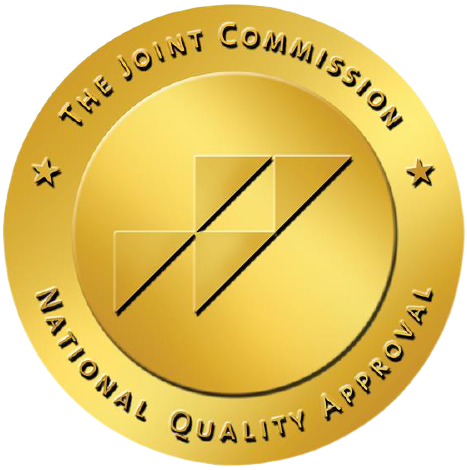Understanding Self-Harm in Teenagers: Definition, Reasons, and Treatment
Introduction
Self-harm in teenagers, also referred to as self-injury or non-suicidal self-injurious behavior, is a complex and concerning issue that demands our understanding and compassion. This self-destructive behavior encompasses deliberate acts in which adolescents harm themselves as a way to cope with intense emotional pain, distress, or inner turmoil. Self-harm serves as a maladaptive coping mechanism for teenagers struggling with intense emotions. In this exploration of self-harming behavior among teenagers, we will delve into its various aspects, from its prevalence and significance to the underlying causes, common methods, warning signs, and the crucial steps required to provide support and intervention.
Definition of Self-Harm
Self-harm is a deliberate act in which individuals intentionally harm their own bodies to cope with overwhelming emotional pain, distress, or inner turmoil. What sets self-harm apart from accidental injury or acts like tattooing or body piercing is the primary intention behind the action. Unlike accidental injuries, self-harm is a purposeful act where individuals inflict pain or injury upon themselves. It differs from tattooing or piercing in that it’s not done for artistic expression or decoration. Importantly, self-harm is also distinct from suicidal behavior as the individual engaging in self-harm typically does not intend to end their life but rather seeks relief from emotional pain through the physical pain inflicted. Understanding this distinction is helpful for providing appropriate support and intervention to those struggling with self-harm.
Prevalence and Significance
Understanding the prevalence of self-harm among teenagers is essential for recognizing its significance. Research suggests that approximately 13-23% of adolescents may engage in self-harming behaviors at some point during their teenage years. The significance of addressing self-harm lies in preventing further harm, both physically and emotionally, and offering effective support to help teenagers navigate their emotional struggles.
Common Self-Harming Methods
Self-harm can manifest in various ways, and the choice of method varies from teenager to teenager. These methods may include:
-
- Cutting: The use of sharp objects, such as razors or knives, to make cuts on the skin.
-
- Burning: Applying heat sources like lighters or cigarettes to the skin to cause burns.
-
- Hitting: Striking oneself against objects or hitting one’s body with fists or objects.
-
- Scratching: Using fingernails or other sharp objects to scratch the skin’s surface.
-
- Biting: Biting oneself, often resulting in bruises or broken skin.
-
- Hair-Pulling: Pulling out one’s hair, leading to hair loss or scalp injury.
-
- Head-Banging: Repeatedly striking one’s head against a wall or hard surface.
-
- Picking or Peeling: Excessively picking at scabs, wounds, or skin to cause harm.
-
- Interference with Wounds: Preventing the healing of existing wounds or injuries.
It’s essential to note that the choice of method can vary among individuals, and some may use less noticeable methods to conceal their actions. Understanding these common self-harming methods helps in being alert to recognizing the signs and providing appropriate support to teenagers in need.
Why does my teenager self-harm?
Understanding the underlying causes and risk factors behind self-harming behavior is an important step in providing effective support. The underlying cause of self-harm in teenagers can be multifaceted, driven by various factors such as the need to reduce negative thoughts and emotions, the wish to generate desired feelings and thoughts, seeking an escape from stressful social situations, or eliciting a positive response from others. These motivations often emerge as adolescents grapple with intense emotional pain, distress, or inner turmoil that may be challenging to describe in words.
Contributing factors to self-harm include emotional distress, past traumatic experiences, peer pressure, social isolation, a lack of healthy coping skills, impulsivity, and underlying mental health conditions. It’s important to recognize that self-harming behaviors can serve as a coping mechanism for teenagers facing these challenges. Other conditions, such as generalized anxiety disorder, conduct disorder, oppositional defiant disorder, depressive disorders, eating disorders, posttraumatic stress disorder, and substance use disorders, can significantly influence self-harm behaviors. The complexity underscores the importance of comprehensive assessment and tailored treatment approaches when addressing self-harm in teenagers, considering the interplay of biological, social, and psychological factors.
Self-Harm in Teenagers: Warning Signs
Recognizing the warning signs of self-harm is essential for early intervention. These signs may include:
-
- Unexplained Cuts or Bruises: Frequent and unexplained injuries, often found on hidden parts of the body.
-
- Any prior history of self-harming behavioral
-
- Wearing Concealing Clothing: Consistent use of long sleeves, even in warm weather, to hide injuries.
-
- Collection of Sharp Objects: Gathering sharp objects such as razors could be a warning sign for self-harm in teenagers.
-
- Social Withdrawal: Avoiding activities that necessitate revealing clothing.
If you notice any of these signs in a teenager, approach the situation with care, compassion, and concern.
How to approach and speak with a teenager that is self-harming
Speaking with a teenager who is self-harming requires an empathetic approach. Here are some steps to consider:
-
- Choose an Appropriate Time and Setting: Seek out a calm and comfortable space to have an undistracted discussion. Timing matters, so pick a moment when both you and the teenager are relatively calm and not rushed.
-
- Express Concern and Care: Start the conversation by expressing your genuine concern and care for their well-being. Let them know that you are there to listen and support them, not to judge or blame.
-
- Use Non-Judgmental Language: Use phrases like, “I’ve noticed,” or “I’m concerned about,” to express your observations and feelings.
-
- Listen Actively: Give the teenager an opportunity to share their thoughts and emotions. Listen attentively without interrupting, allowing them to express themselves freely. Encourage them to talk about their feelings, stressors, and the reasons behind their self-harming behavior.
-
- Avoid Ultimatums: Refrain from issuing ultimatums or threats. Instead, emphasize your commitment to their well-being and the importance of working together to find healthier coping strategies.
-
- Ask Open-Ended Questions: Use open-ended questions to encourage deeper conversations and understanding. For example, ask, “Can you tell me more about what you’re going through?” or “How can I support you better?”
-
- Offer Support, Not Solutions: While you may want to help, remember that you are not a mental health professional. Offer emotional support and encourage them to participate in therapy and related forms of professional help. You can suggest they speak with a therapist or counselor who specializes in adolescent mental health and offer to coordinate it with them.
-
- Respect Their Privacy: Understand that not all teenagers may be ready to share their experiences fully. Respect their boundaries and let them know you are available when they feel comfortable talking.
-
- Stay Calm: Maintain a calm and composed demeanor during the conversation, even if the topic is distressing. Your stability can provide a sense of security and safety.
-
- Follow Up: Continue to check in on the teenager’s well-being and progress. Offer ongoing support and let them know that you are there for them throughout their journey to recovery.
Seeking Professional Help: Things to Consider
When treating self-harming behavior in teenagers, several important considerations come into play. Firstly, it’s essential to understand that self-harm may not cease immediately. Recovery is often a gradual process, and expecting immediate cessation may lead to frustration for both the teenager and their family. Patience and consistent support are essential as the individual learns healthier coping mechanisms to replace self-harm.
Family involvement in treatment helps. Family support can be instrumental in a teenager’s recovery. Parents and caregivers can join the treatment process by participating in therapy sessions, skill practice between sessions, and reading educational materials about the condition can help to create a supportive environment for the teenager. Collaboration between the treatment team and the family ensures a holistic approach to healing.
Additionally, considering the most appropriate level of care to support safety is essential. Adolescents with more severe self-harming behaviors may require intensive outpatient programs, partial hospitalization, or even inpatient care to ensure their safety and provide structured therapeutic interventions. Safety plans tailored to the individual’s specific needs can be developed to identify triggers, warning signs, and coping strategies. Regular monitoring and assessment of progress are needed to adjust treatment strategies and support the teenager’s well-being. Finally, addressing co-occurring mental disorders, such as anxiety or depression is vital. These conditions often underlie self-harm behaviors, and effective treatment should address both the self-harming tendencies and the underlying mental health issues to achieve long-term recovery.
Treatment for Self-Harm in Teenagers
The treatment for self-harming behavior in teenagers typically involves a multifaceted approach. Dialectical Behavioral Therapy (DBT) is often employed, teaching emotional regulation, distress tolerance, and interpersonal effectiveness. Cognitive-Behavioral Therapy (CBT) also helps identify and modify thought patterns and behaviors to expand health coping strategies. Often, parents learn how to assist with treatment, while psychiatric disorders like anxiety and depressive disorders are also addressed.
Creating a Supportive Environment
Support at home and in school plays a pivotal role in a teenager’s recovery from self-harm. Consider family therapy or counseling to address family dynamics, to optimize support. Encourage the development of healthy coping mechanisms, provide resources, and ensure access to mental health services. Remember that recovery is a journey, and your ongoing support is invaluable.
Conclusion
Self-harm in teenagers is complicated and offering support and empathy is a great place to start. We have explored the intricacies of this behavior, from its definition as a coping mechanism to its prevalence and significance in the lives of adolescents. Recognizing common self-harming methods, the underlying causes, and the warning signs that signal a cry for help, help create opportunities for early intervention.
Initiating a conversation with a self-harming teenager with compassion and patience can offer them the necessary support to start their path towards healing. Moreover, the treatment considerations, including the gradual nature of change, the role of family involvement, safety planning, and addressing co-occurring mental disorders, underscore the complexity of the healing process. By acknowledging these aspects and fostering open communication, we can create a safe and compassionate environment in which teenagers can find healthier ways to cope with their emotional struggles, ultimately guiding them toward a more resilient future.
Additional Reading
For further information and resources on self-harm in teenagers, consider exploring the following reputable references:
1. National Alliance on Mental Illness (NAMI): Self-Harm
2. American Academy of Child & Adolescent Psychiatry: Children And Self-Injury











